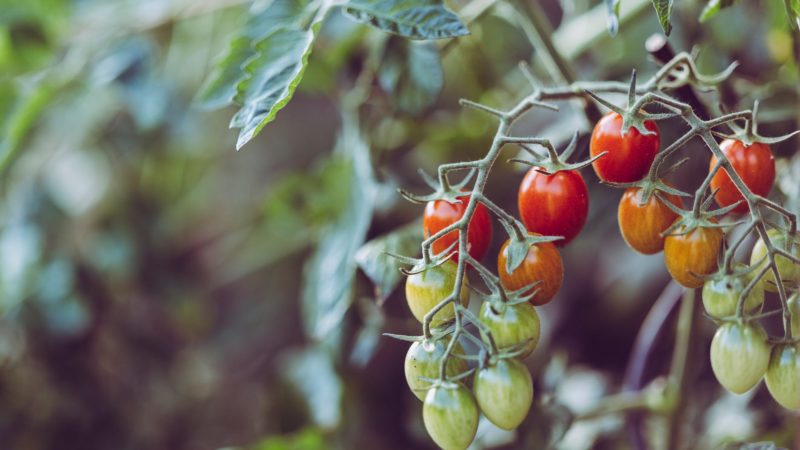Top 10 Houseplants That Clean Air

Houseplants That Clean Air: Houseplants are a great way to add life and oxygen to your home. They not only improve the air quality, but they also help purify it. Make sure you have these ten best houseplants for improving indoor Air Quality in every house room.
The colder months are a great time to care for indoor air quality. Indoor pollution builds up during these warmer days and can adversely affect our health if not ventilated properly.
Indoor pollutants come in two major varieties, the stuff you can see and touch (like dirt) or something less tangible but just as dangerous – chemicals.
- Volatile organic compounds –Vapor intrusion is a serious problem for homeowners. The gases released from paints, fabrics, and other materials can cause problems in your home – even if you don’t notice them immediately. These VOCs are heavier than air, so they tend to settle near ground level or higher up around windows with an open door frame readymade as their destination.
- Particulates such as mold spores, pollen, and dust.
The best way to remove airborne chemicals is by removing their source. You can do this with either mechanical or electrostatic filters. Still, unless we stop the flow of pollution into our environment completely, it will continue accumulating and harming us in some way.
How do Plants help with Filtering Indoor Air?
Indoor plants are a great way to bring fresh air and life into your home. Not only do they help improve the quality of our indoor environment, but some studies have even shown that plant species can reduce carbon dioxide levels by more than 40%.
A basic understanding of how plants work might be enough for you: flora takes Co2 while releasing O2 – which we use in breathing. But what happens when these precious inhabitants grow inside an enclosed space like someone’s house?
House plants are not just for looking pretty. They can be your best friend when you need to clean the air in a room. A study done by NASA Clean Air Study tested 19 different species of houseplants and found that they removed up to 87% formaldehyde, benzene, or trichloroethylene within 24 hours while giving off oxygen back into their surroundings as well.
Top 10 Houseplants That Clean Air
We have listed some of the Houseplants That Clean the Air below:
Spider Plants ( Scientific Name: Chlorophytum comosum)
Spider plants are not just beautiful; they’re also powerful air purifiers. These vines can remove formaldehyde gas released by cigarette smoke and other sources, such as synthetic carpeting or fingernail polish, to make your home cleaner than ever.
If you want a plant for extra filtration in the bedroom, then a spider flower would be perfect because its leaves will filter out even more particles from sunlight passing through them.
Philodendrons
The most popular houseplants are also excellent air purifiers and remove formaldehyde gases from the atmosphere. They’re bullet-proof plants with quick-growing trailing vines that will take full sun to shade if watered regularly.
The best of these is Philodendron selloum (a heart-leafed type), but elephant ear varieties make great cleaners, too–be sure not to let them get burnt out by direct sunlight because this plant doesn’t like hot spots in its potting soil, either way, you look at it.
English Ivy (Scientific Name: Hedera helix)
3. English Ivy (Hedera helix) is a hardy plant that can survive in most environments and remove many pollutants from the air, making it popular among homeowners who want cleaner skies outside their windows.
It prefers lighter soils with plenty of water to sun or shade but will do fine without these things if needed by staying cool during hot temperatures while still removing unwanted bugs like spider mites through weekly spraying on its leaves.
Peace Lily (Scientific Name: Spathiphyllum sp.)
Peace lilies are known to clean the air of alcohols, acetone, and trichloroethylene. They also help reduce benzene levels in your home.
Keep them moist by placing them in a semi-shady location where they can get plenty of vitamins from sunlight and water droplets on their leaves. This will ensure their health is not compromised even when there isn’t any more natural light coming through windows or other sources around them.
Snake Plant (Scientific Name: Sansevieria trivasciata)
The Variegated Snake Plant, also called “Mother-in-Law’s Tongue.” It is very easy to grow and can survive in any location from sun or shade.
Bromeliads
The Bromeliad is one of the fascinating plants ever to grace Earth. Not only does this flower produce oxygen while you sleep, but it also removes harmful air pollutants at night.
The plant requires bright sunlight or office lighting with indirect light during day hours due to its need for watering less often than other types of vegetation do to avoid root rot. Clinical grounds supervisor Aimee Van Leuven shares more on these amazing organisms: “You’ll be blown away by how many ways bromeliads use their roots.”
Rubber plants (Scientific Name: Ficus elastica)
The rubber plant is a popular houseplant for its ability to tolerate dim light and cool temperatures. It removes air toxins from any indoor environment, making it perfect as an office space fill or classroom teacher.
ALSO READ: Plants That Grow In The Dark And In Low Light
Dracaena
The best way to keep your Dracaena alive and healthy is by ensuring it’s in a shady location with moist soil. The plant will thrive if you give them enough moisture, as most plants do.
Areca palms (Scientific Name: Chrysalidocarpus lutescens)
Areca palms are beautiful plants that remove all of the toxins from your indoor air.
Weeping fig (Scientific Name: Ficus Benjamina)
The Weeping Fig loves bright, indirect light and high humidity. Water when topsoil feels dry to touch or mist the leaves regularly for best results.
Final Thoughts
So these are some of the Houseplants That Clean the Air. You don’t need to turn your home into a jungle, but it’s helpful if you can get all the plants in one or two rooms. For example, with 8-9 foot high ceilings and small spaces between each plant located on an area measuring 100 sq ft., only 1/4 acre worth (1%) would benefit from having several different houseplants at once.
The roots play just as important when growing these Croatanthus coleuses, and Goldfish genres because they allow toxins to dissolve harmlessly through their micro soil ecosystem.






